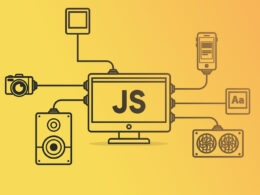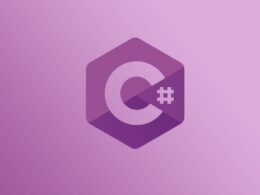Dart in Development: What is Dart Used For?

Imagine crafting a seamless app experience with a programming language so robust, it not only piques the curiosity of every tech enthusiast but revolutionizes the way we perceive software engineering.
That’s where Dart swoops in, a language not just confined to a pocket of the web but stretches its wings across a multitude of platforms. With this article, I’m unfolding every layer of Dart’s capabilities, revealing why it’s been enthusiastically embraced for mobile and web applications alike.
By venturing through this exploration of Dart, you’re signing up for an intellectual journey across the vast Flutter framework, where we’ll decode the intricacies of cross-platform development and its impact on user interface design.
From asynchronous programming to dexterous JIT and AOT compilation, the curtain will be lifted on Dart’s profound versatility.
Your takeaways? A comprehensive grasp of DartVM, insights into Dart-syntax-powered software engineering challenges, and a deeper appreciation for code optimization.
The strokes of my keyboard are set to map out a path to mastering Dart – a route towards elevated software performance and ingenious app development frameworks.
What is Dart Used For?
Dart is primarily used for building high-quality, natively compiled applications for mobile, web, and desktop from a single codebase. It is the programming language behind Flutter, Google’s UI toolkit for crafting beautiful, natively compiled applications. Dart’s optimized performance and sound type system enhance developer productivity and app responsiveness.
| Use Case | Features | Frameworks/Platforms | Scalability | Notable Projects |
|---|---|---|---|---|
| Mobile Apps | Hot reload, native perf | Flutter | Scalable architecture | Google Ads app |
| Web Apps | Compiles to JavaScript | AngularDart | Client-side optimization | AdWords |
| Desktop Apps | Cross-platform support | Flutter (beta for desktop) | Consistent UI | Flutter Gallery |
| Server-side Apps | Event-driven I/O | Aqueduct, Shelf | Efficient concurrency | Dart services |
| IoT Devices | Lightweight execution | Flutter for embedded | Low-resource optimization | Home automation apps |
Dart’s Core Features

Diving into the core of Dart, it’s like opening a box of digital legos. Here, we’ll explore the nuts and bolts of what Dart is used for. Think of it as a peek behind the curtain of this versatile language.
Language Characteristics
Type safety and sound null safety: In Dart, it’s like having a safety net while walking a tightrope.
Every variable’s type is known, and it’s super smart about handling ‘null’ values. This means fewer crashes and more robust apps.
Syntax and ease of learning: Dart’s syntax is a breeze, especially if you’ve flirted with other coding languages.
It’s clean, intuitive, and friendly even for newbies. Imagine writing code that feels almost like plain English – that’s Dart for you.
Optimization for UI Development
Specialized features for UI creation: Dart is the star behind stunning user interfaces. Paired with Flutter, it’s like having a magic wand for crafting visually appealing and responsive UIs. Whether it’s a mobile app or a web page, Dart ensures your design shines.
Async-await and isolate-based concurrency: Think of Dart as a multitasking wizard.
Its async-await feature lets your app handle multiple tasks smoothly, like downloading files without freezing the screen.
And with isolates, Dart handles heavy lifting without breaking a sweat, keeping your app zippy and responsive.
Dart in Application Development
Mobile App Development
Imagine you’re crafting an app. You want this digital baby to run both on Android and iOS, right?
That’s where Dart, with its partner-in-crime Flutter, steps in. It’s like having a universal language for both platforms.
Flutter’s like the Robin to Dart’s Batman, making cross-platform development a walk in the park.
The coolest part? The “write once, run anywhere” mantra. You code once, and bam! Your app’s rocking on both Android and iOS. It’s efficient, less time-consuming, and, let’s be honest, kind of awesome.
And when you’re comparing Dart with, say, React Native, it’s like choosing between a sports car and a sedan. Both get you places, but Dart’s got that extra vroom – a smoother UI and a faster performance.
Want to dive deeper into the world of mobile app development languages? This article on mobile app development languages is like hitting the jackpot for understanding where Dart stands in the mix.
Web Development
Now, onto the web – Dart’s not just a one-trick pony. When it comes to web development, Dart flexes its muscles by compiling to JavaScript.
It’s like having a secret decoder ring that turns Dart into a language the web understands natively.
Performance and compatibility – these are the biggies in web development, right? Dart smooths out those wrinkles.
It ensures your web app not only runs smoothly but also feels like it belongs on the web, not an afterthought or a forced fit.
Dart for Backend Development
Server-Side Programming
Imagine you’re building the engine of a car – that’s kind of what server-side programming is like. Dart here is like an efficient, reliable engine part. It’s not just about what Dart is used for in the flashy front-end; it’s also powering the nitty-gritty, behind-the-scenes action.
Dart’s server-side capabilities are like a hidden superpower. It’s robust, scalable, and, believe it or not, pretty straightforward to get a handle on.
Picture handling data, managing server requests, and all that backend jazz – Dart does that with a certain finesse.
Comparing Dart with other server-side languages?
It’s like Dart brings its own unique flavor to the party. Sure, there are other languages out there, but Dart’s simplicity and efficiency make it a standout choice, especially when paired with Flutter for full-stack development.
Keen on exploring more about server-side scripting? Dive into this comprehensive guide on API for mobile apps, which offers insights into how Dart fits into the bigger picture.
Community and Ecosystem
No language is an island, right? It’s the community and ecosystem that truly make a language shine. Dart’s community? It’s vibrant, growing, and super supportive. Imagine a bunch of enthusiastic devs sharing, helping, and innovating together – that’s Dart’s community for you.
And the ecosystem – oh, it’s rich with libraries, tools, and resources. It’s like having a toolbox with just the right tool for every job you can imagine.
Whether you’re looking to streamline your development process, troubleshoot, or just explore new possibilities, Dart’s ecosystem has got you covered.
In the realm of backend development, what Dart is used for goes beyond mere coding.
It’s about being part of a thriving community, tapping into a wealth of resources, and pushing the boundaries of what’s possible in server-side programming.
Dart’s Competitive Landscape
Comparison with Other Languages

Dart vs JavaScript – this is like the clash of the titans in the programming world. JavaScript, the seasoned veteran, has been around the block, powering web experiences for ages. Dart?
It’s the spry newcomer, bringing a fresh approach, especially in UI design and mobile app development. It’s like comparing a classic rock band with the latest pop sensation. Both have their charm, but Dart offers that new-age vibe, especially with its buddy Flutter making cross-platform development a breeze.
Dart’s unique advantages? Think type safety, a rich set of libraries, and the hot reload feature, making it a darling for developers who crave efficiency and speed. Limitations? Well, it’s not as universally adopted as JavaScript, but hey, it’s getting there!
If you’re keen on exploring the nuances of these languages, this insightful article on IDE for mobile app development offers a great perspective.
Market Trends and Developer Preferences
Now, let’s talk about the buzz in the market. Dart’s growing market share is like watching a rising star in a talent show.
More and more developers are tuning into Dart’s frequency, especially with mobile app analytics showing its efficiency in crafting top-notch apps.
The developer experience with Dart? It’s mostly smiles and thumbs up. The language’s simplicity, coupled with Flutter’s power, is like having a secret weapon in the app development arsenal.
And community feedback? It’s like a warm, welcoming club where everyone’s excited about what Dart brings to the table.
Learning and Development Tools
Resources for Learning Dart
Official documentation and tutorials – These are like your trusty guidebook. The Dart docs are clear, comprehensive, and updated.
It’s like having a friendly mentor guiding you through every twist and turn of the language. And the tutorials? They’re practical, engaging, and cover everything from basic syntax to advanced concepts.
Online platforms and community support – The Dart community is like a buzzing hive of friendly bees, always ready to help.
Whether it’s a quick question or a deep dive into a complex topic, there’s always someone ready to lend a hand. Online forums, Q&A sites, and social media groups – it’s all there, a click away.
And if you’re looking to up your mobile app development game, this piece on no-code app builders offers insights into tools that complement Dart, especially for beginners.
Development Tools and Environments
Tools for profiling, logging, and debugging – Think of these as your detective kit for sniffing out issues and optimizing your code. Dart’s development tools are like having a magnifying glass over your code, helping you spot and fix bugs faster.
Hot reload and iterative development features – This is the magic wand of Dart, especially with Flutter. You make a change, and bam! It’s right there on the screen. No more waiting, no more reloading. It’s like seeing your ideas come to life in real-time.
FAQ On What Dart Is Used For
What exactly is Dart, and its primary use?
Dart is a programming language conceived by Google; it’s a tool that breathes life into the creation of multi-platform applications.
Utilizing the Flutter framework, Dart is known for building visually attractive and natively compiled applications across mobile, web, and desktop from a single codebase.
How does Dart integrate with the Flutter framework?
Dart serves as Flutter’s programming language, infusing dynamics and precision into user interface design. Together, they form a unit that simplifies the complex choreography of cross-platform development.
Dart provides the foundation upon which Flutter’s customizable and interactive UI widgets dance.
Is Dart confined only to mobile application development?
Not in the slightest. Dart’s versatility stretches beyond the realm of mobile apps. Its potential is also tapped for web applications, where it can be transpiled to JavaScript, thus offering a full-scale solution for both client-side and server-side development.
Why would a developer choose Dart over other languages?
Developers might lean towards Dart for its tailored synergy with Flutter, which allows for efficient development cycles and native performance.
Its modern language features and emphasis on asynchronous programming ensure a smooth and responsive app experience, set within a strongly typed environment.
Is Dart easy to learn for beginners in programming?
With its clean syntax and resembling other popular languages, Dart is fairly approachable for beginners. It’s imbued with features like type inference and garbage collection which abate common programming headaches, paving a more amenable learning curve.
How does Dart handle multi-threading and concurrency?
Dart’s event loop model and use of isolates defy the traditional multi-threading woes. Asynchronous programming is a stronghold in Dart, allowing it to adeptly shuffle operations without jumbling the threads of scalable application building.
How is Dart performance compared to other languages?
Fondly regarded for its JIT and AOT compilation, Dart is a sprinter in the development phase and a marathoner post-deployment.
These compilation strategies equip Dart with responsive designs and a quick turnaround for software performance during development, while still achieving an excellent runtime speed.
Can Dart compile to both front-end and back-end code?
Absolutely. Dart flexibly compiles to JavaScript for the front-end or can run on DartVM for server-side prowess. This duality underscores its potential in full-stack development, making it an enticing option for developers who prefer a comprehensive toolkit.
How does Dart support code-sharing across platforms?
One of Dart’s core tenets is multi-platform app creation, made possible by Flutter.
Developers write once and deploy everywhere, translating to a significant uplift in code-sharing efficiency. This leads to a coherent user experience across iOS, Android, and the web without redundant codebases.
What kind of apps can be built with Dart?
From simple calculator apps to complex social media platforms — Dart’s boundaries are seemingly boundless. Its robust language capabilities, paired with Flutter, can cater to sophisticated UI components and backend development, planting the roots for a wide spectrum of software engineering projects.
Conclusion
Swiftly we’ve navigated the currents of Dart, unearthing its myriad uses. It’s clear how it empowers cross-platform development, tying together the rich developer tools and native performance sought after for app development frameworks. The quintessence is simple, yet profound.
- Dart fortifies.
- It transforms the abstract into tangible, user-friendly applications.
- It is the architect behind the responsive design of Flutter’s world.
What is Dart used for? Beyond mere mobile apps; it’s a linchpin in the grander scheme of software solutions. Web applications grace its portfolio, and scalable software engineering projects bask in its capabilities, ensuring Dart’s place in the developer’s arsenal is both deserved, and irreplaceable.
As the sun sets on this digital voyage, remember Dart’s versatility as a beacon for innovation, guiding one through the sometimes choppy waters of multi-platform app creation. Its symbiosis with Flutter, like a painter to canvas, is not just useful—it’s a transformative force in web and app design.
- Avoid Spam Calls: Caller ID Apps Like Truecaller - May 19, 2024
- Streamline Data Access with JavaScript’s for-in Loop - May 19, 2024
- Master Your Build: Essential Java Build Tools - May 19, 2024








